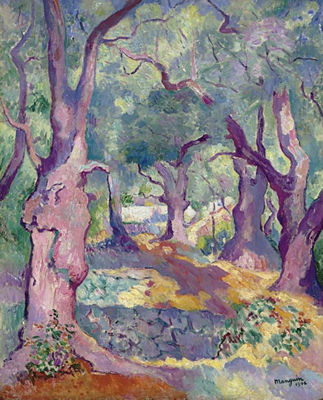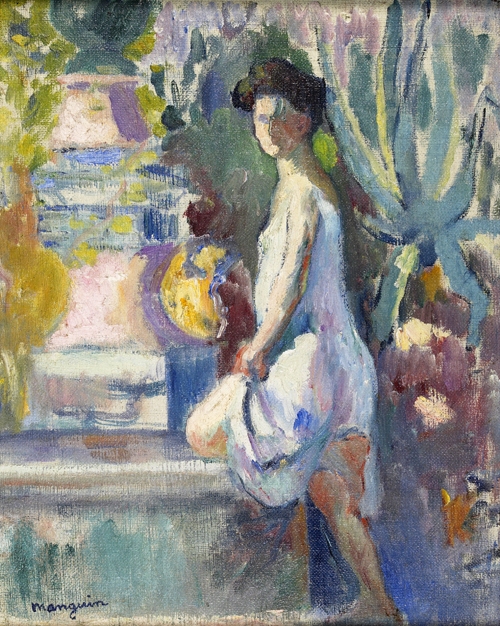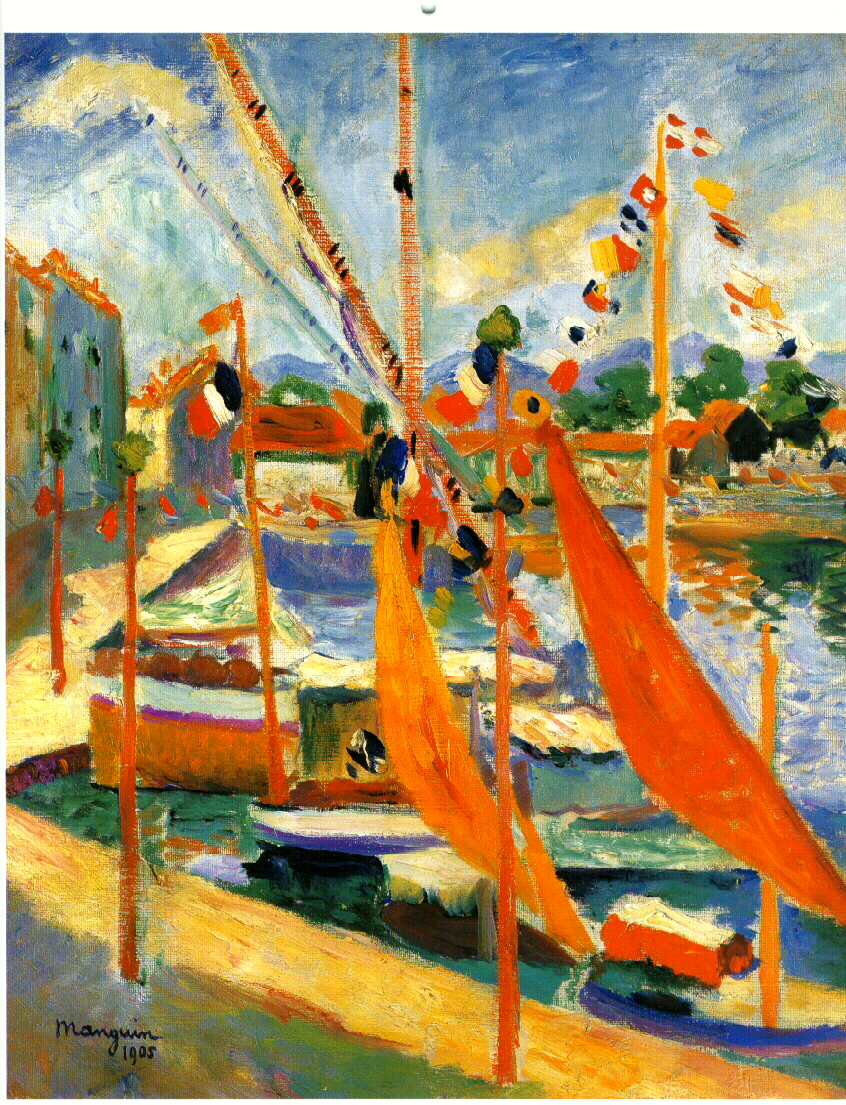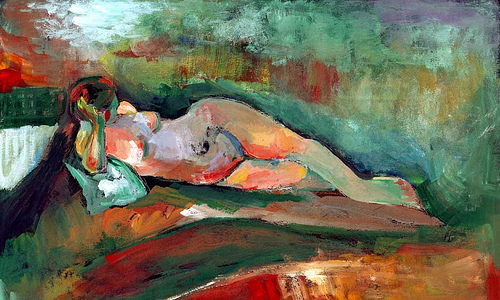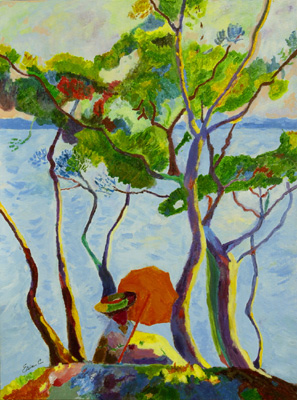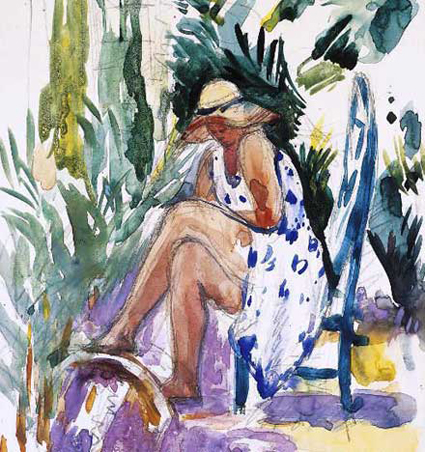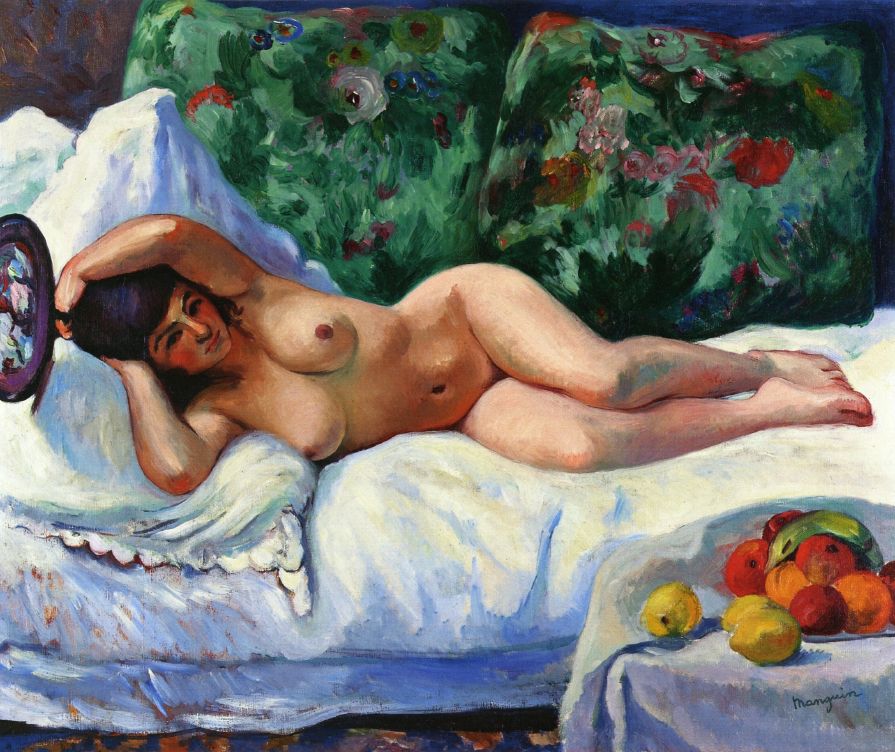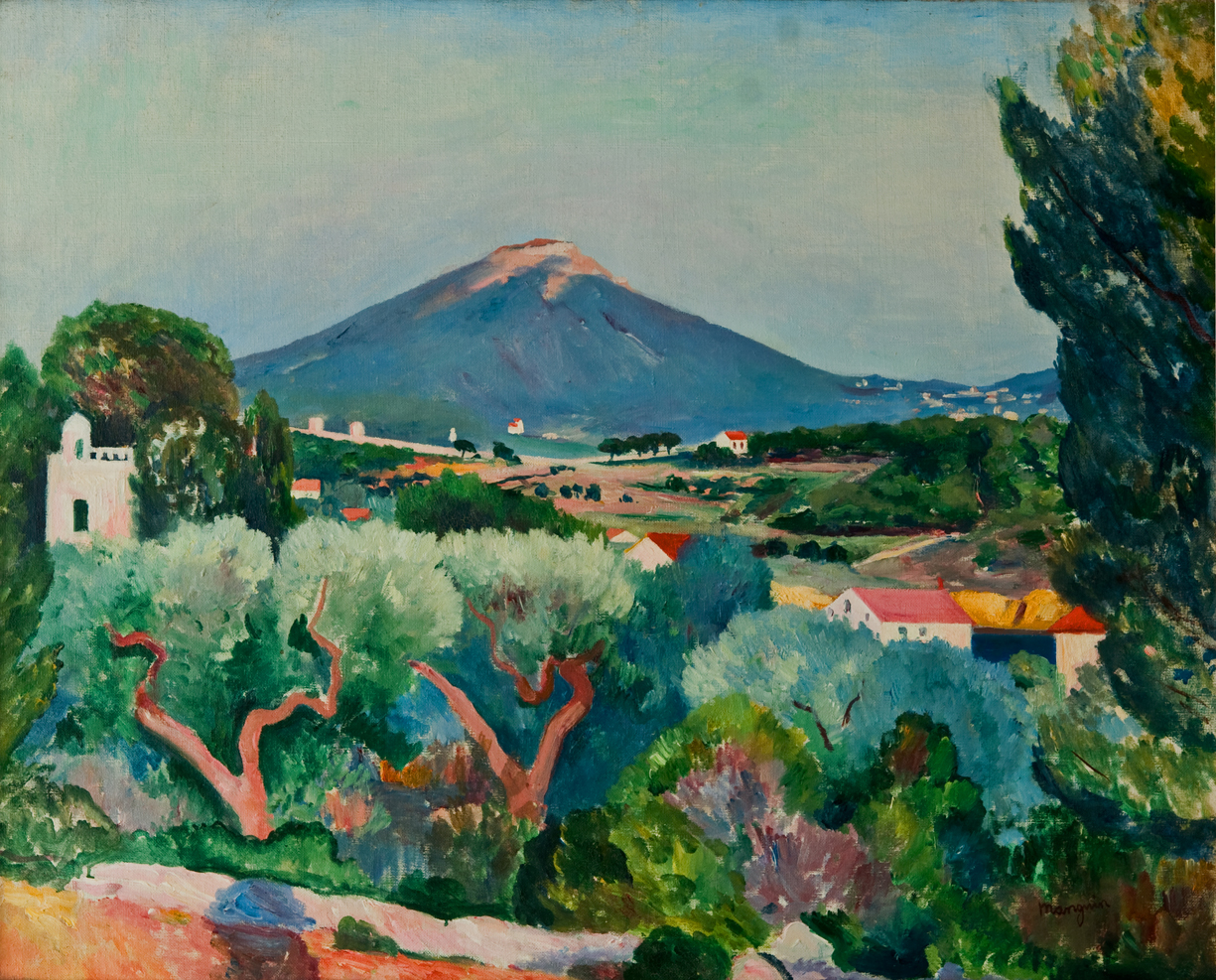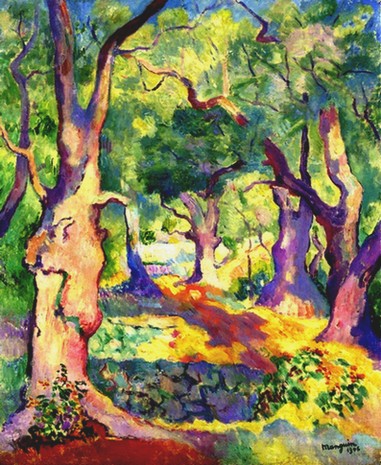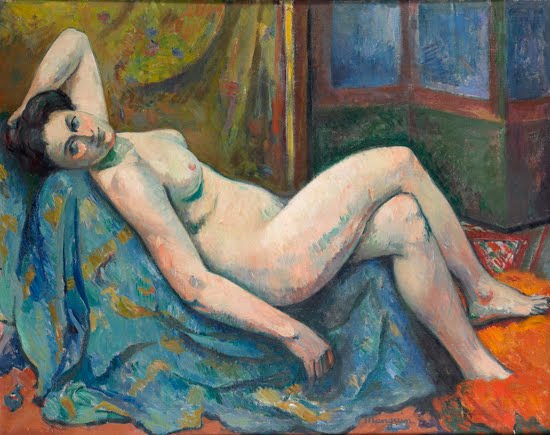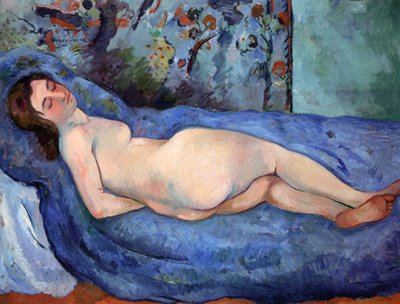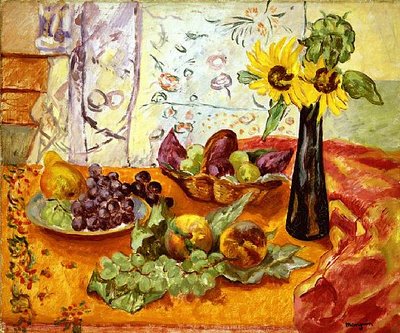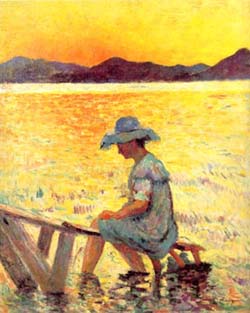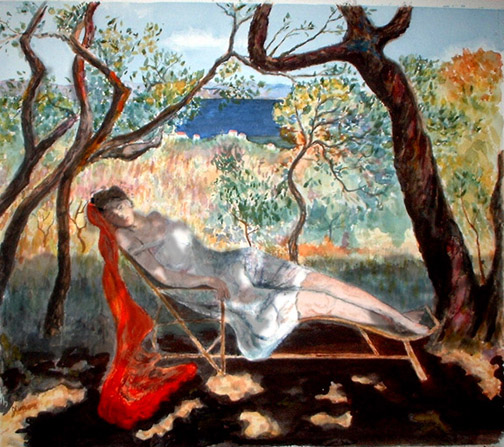<Back to Index>
- Painter Maurice de Vlaminck, 1876
- Painter Henri Charles Manguin, 1874
PAGE SPONSOR
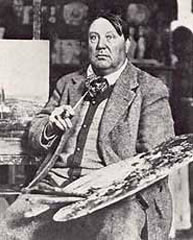
Maurice de Vlaminck (4 April 1876 – 11 October 1958) was a French painter. Along with André Derain and Henri Matisse he is considered one of the principal figures in the Fauve movement, a group of modern artists who from 1904 to 1908 were united in their use of intense color.
Maurice de Vlaminck was born in Paris to a family of musicians. His father taught him to play the violin. He began painting in his late teens. In 1893, he studied with a painter named Henri Rigalon on the Ile de Chatou. In 1894 he married Suzanne Berly. The turning point in his life was a chance meeting on the train to Paris towards the end of his stint in the army. Vlaminck, then 23, met an aspiring artist, André Derain, with whom he struck up a lifelong friendship. When Vlaminck completed his army service in 1900, the two rented a studio together for a year before Derain left to do his own military service. In 1902 and 1903 he wrote several mildly pornographic novels illustrated by Derain. He painted during the day and earned his livelihood by giving violin lessons and performing with musical bands at night.
In 1911, Vlaminck traveled to London and painted by the Thames. In 1913, he painted again with Derain in Marseille and Martigues. In World War I he was stationed in Paris, and began writing poetry. Eventually he settled in the northwestern suburbs of Paris. He married his second wife, Berthe Combes, with whom he had two daughters. From 1925 he traveled throughout France, but continued to paint primarily along the Seine, near Paris. A practiced story teller, Vlaminck wrote many autobiographies, marred little either by lack of confidence or adherence to the truth.
Vlaminck died in Rueil - la - Gadelière on 11 October 1958.
Two of Vlaminck's groundbreaking paintings, Sur le zinc (At the Bar) and L'homme a la pipe (Man Smoking a Pipe) were painted in 1900.
For the next few years Vlaminck lived in or near Chatou (the inspiration for his painting houses at Chatou), painting and exhibiting alongside Derain, Matisse and other Fauvist painters. At this time his exuberant paint application and vibrant use of color displayed the influence of Vincent van Gogh. Sur le zinc called to mind the work of Toulouse - Lautrec and his portrayals of prostitutes and solitary drinkers, but does not attempt to probe the sitter's psychology — a break with the century old European tradition of individualized portraiture. According to art critic Souren Melikian, it is "the impersonal cartoon of a type." In his landscape paintings, his approach was similar. He ignored the details, with the landscape becoming a mere excuse to express mood through violent color and brushwork. An example is Sous bois, painted in 1904. The following year, he began to experiment with "deconstruction," turning the physical world into dabs and streaks of color that convey a sense of motion. His paintings Le Pont de Chatou (The Chatou Bridge), Les Ramasseurs de pommes de terre (The Potato Pickers), La Seine a Chatou (The River Seine at Chatou) and Le Verger (The Orchard) exemplify this trend.
Vlaminck's compositions show familiarity with the Impressionists, several of whom had painted in the same area in the 1870s and 1880s. After visiting a van Gogh exhibit, he declared that he "loved van Gogh that day more than my own father". From 1908 his palette grew more monochromatic, and the predominant influence was that of Cézanne. His later work displayed a dark palette, punctuated by heavy strokes of contrasting white paint.
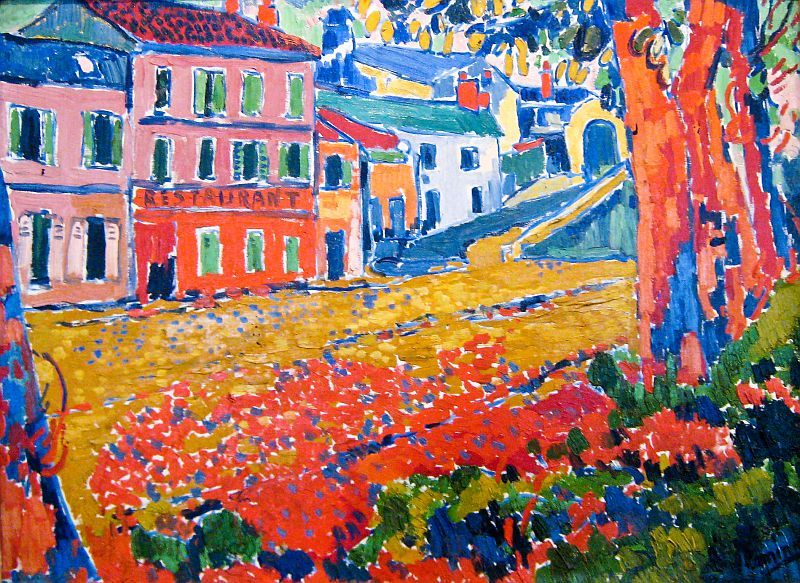
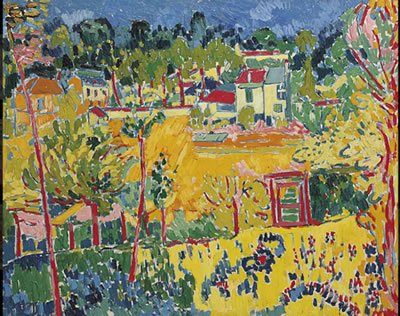
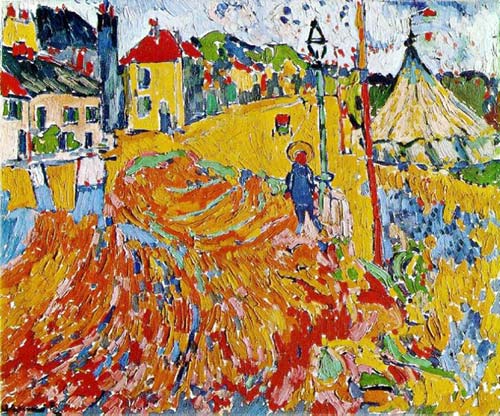
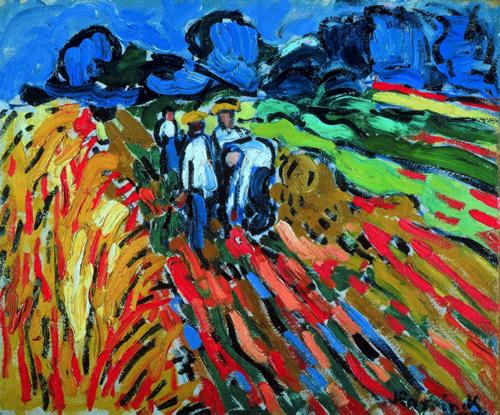
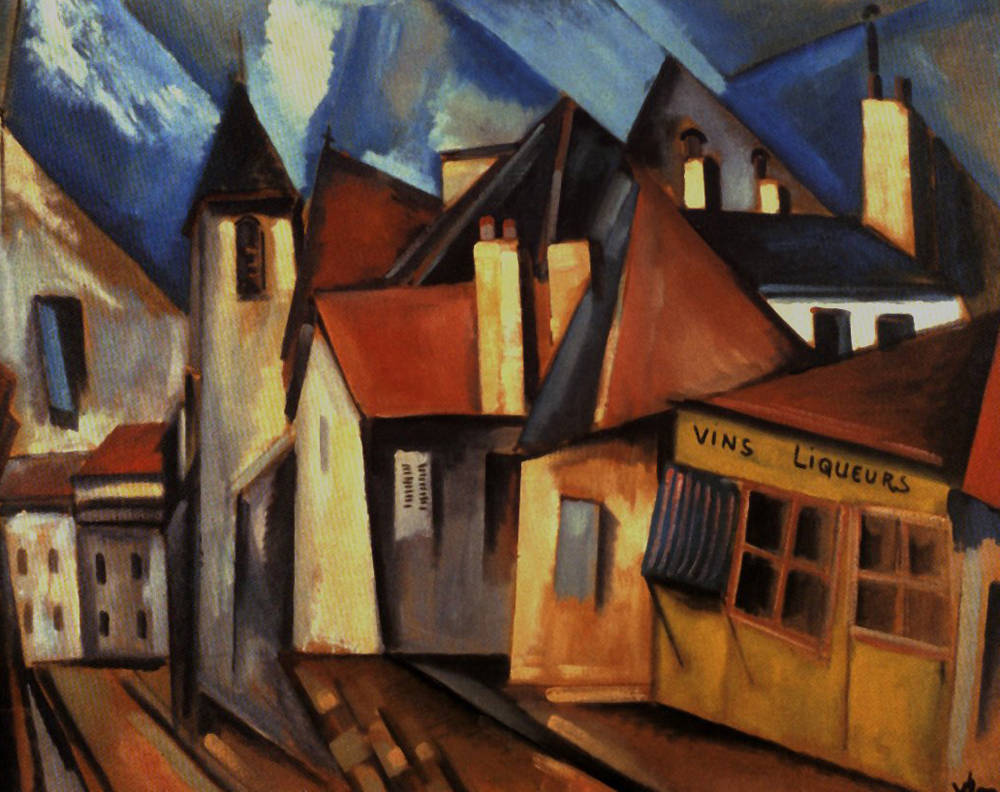
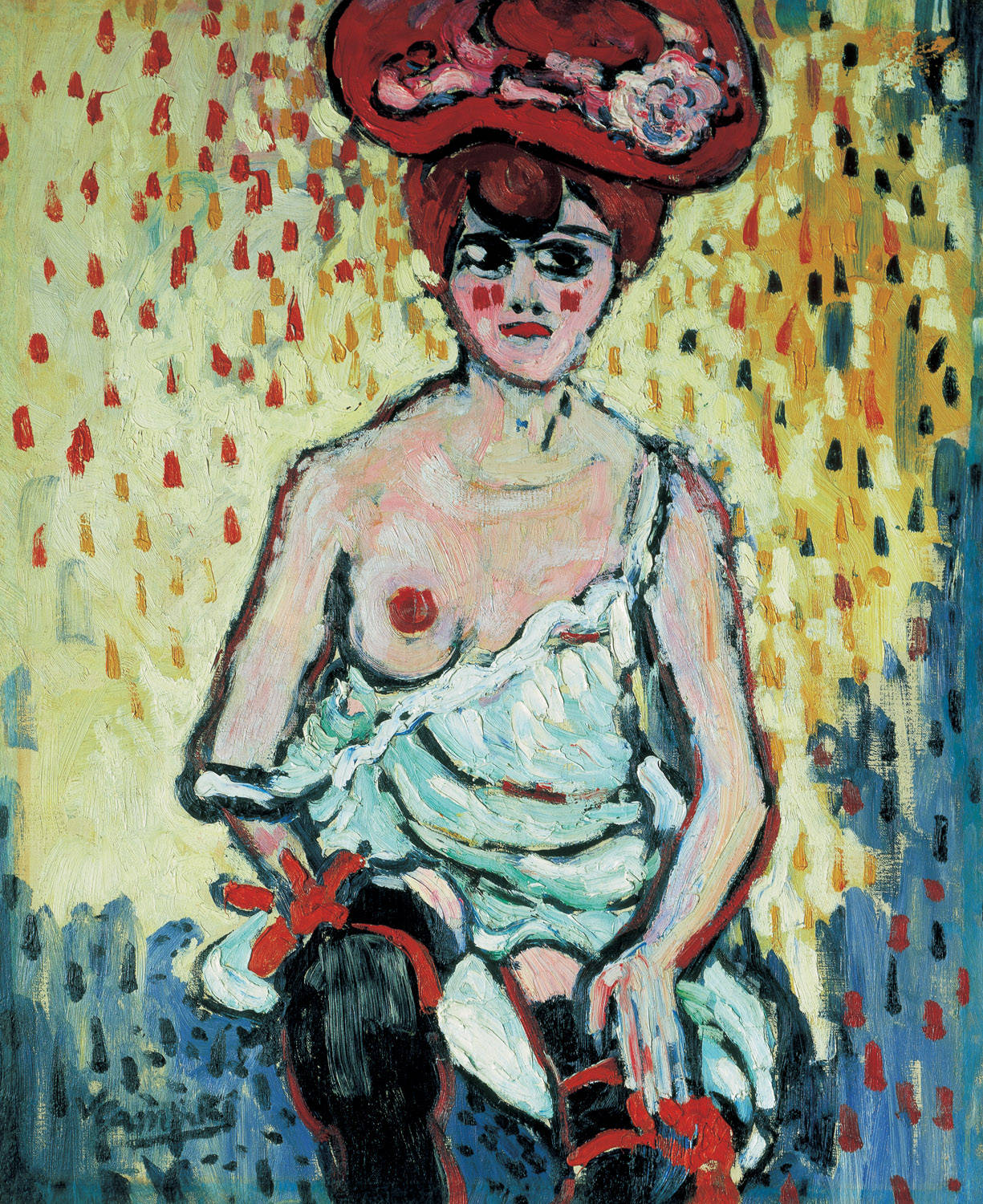
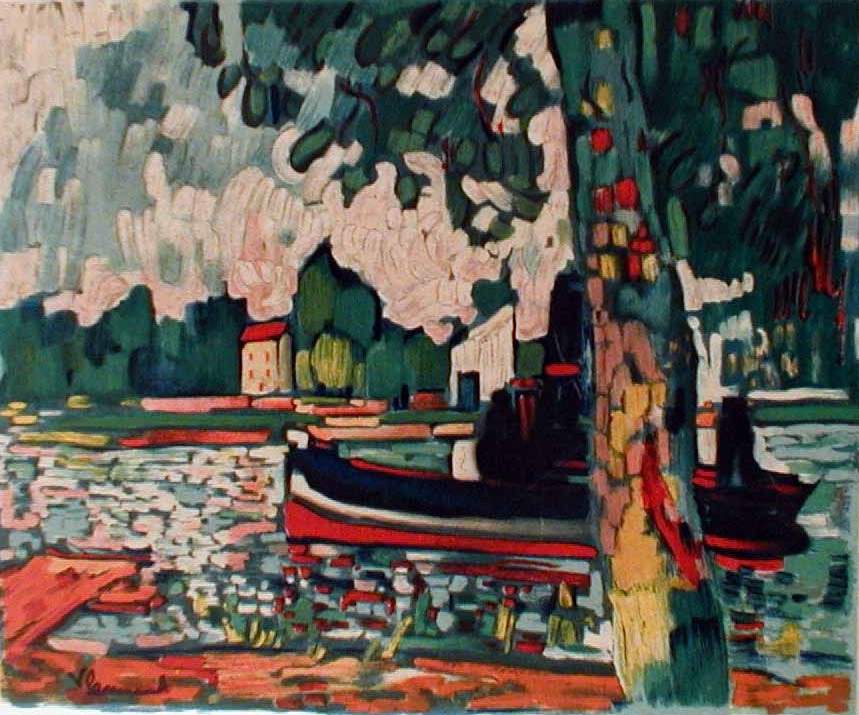
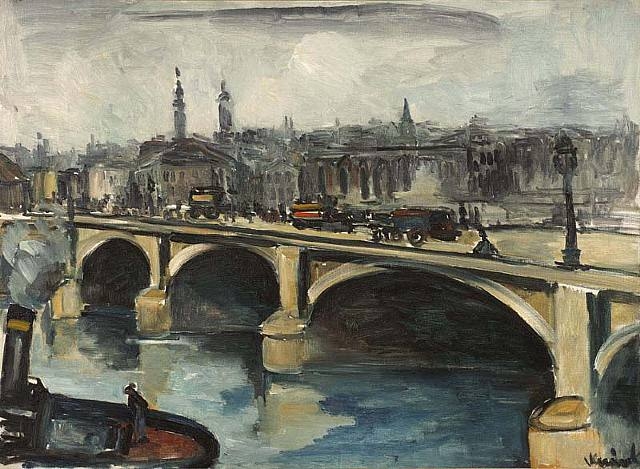
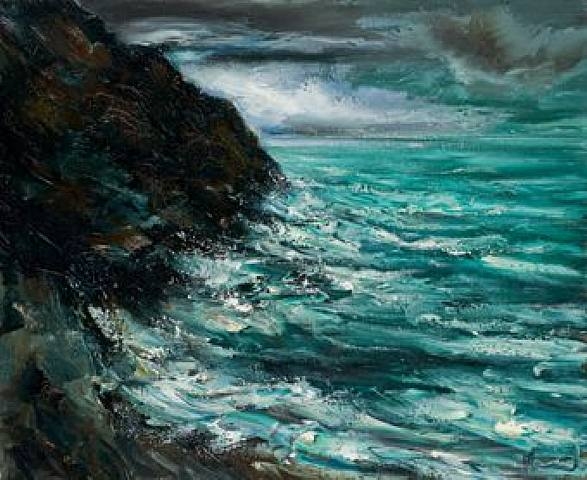
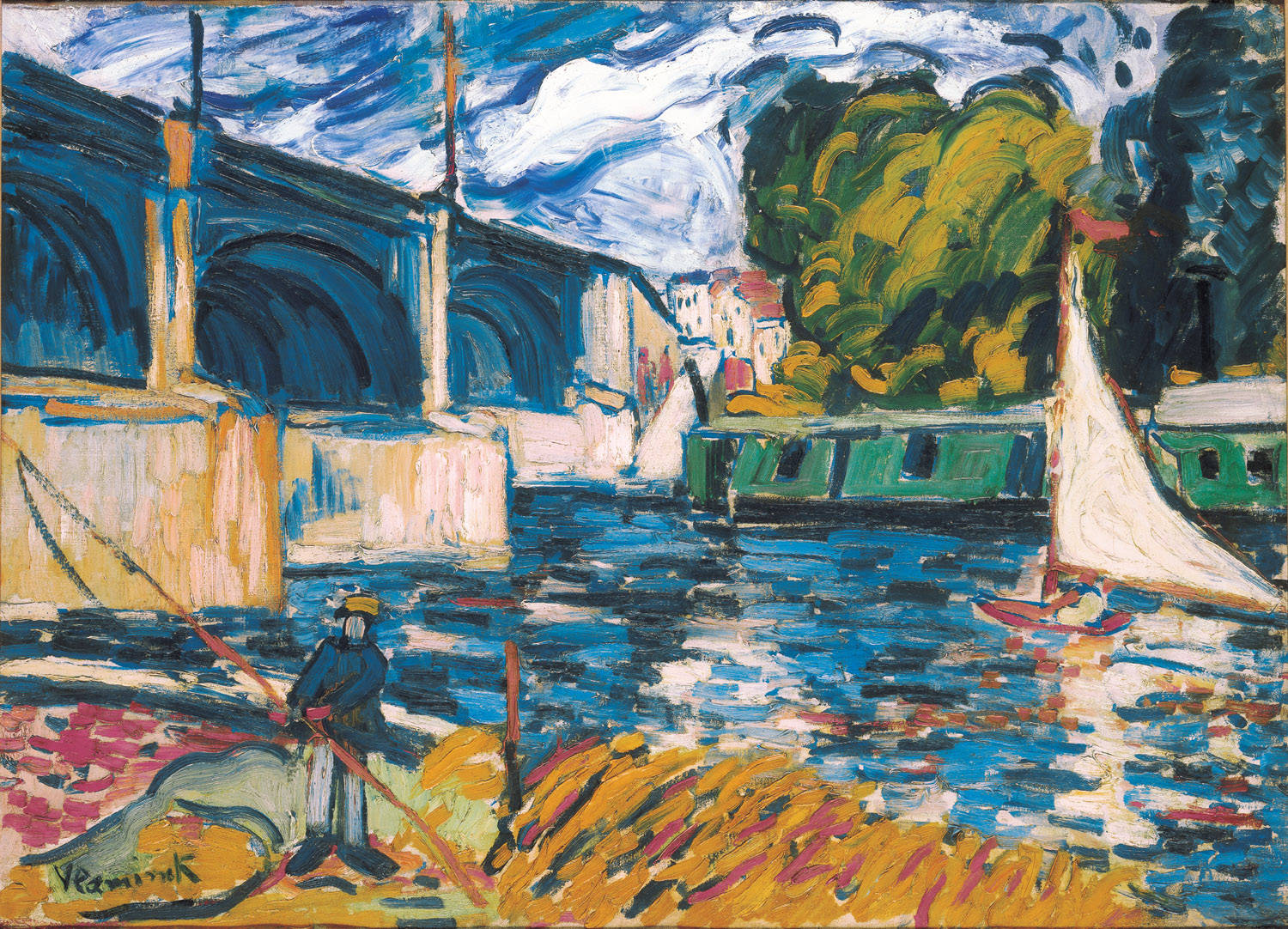
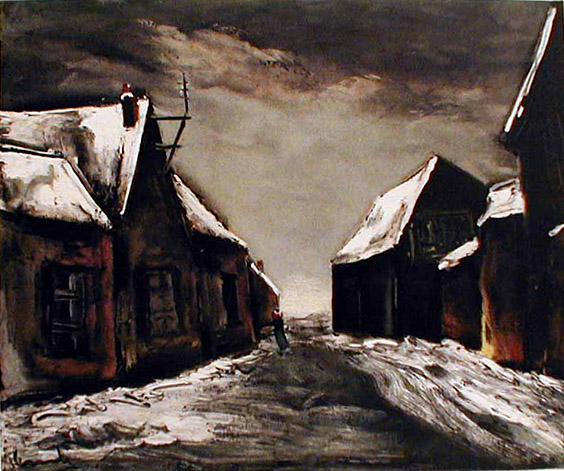
Henri Charles Manguin (Paris, 23 March 1874 – Saint - Tropez, 25 September 1949) was a French painter, associated with Les Fauves.
Manguin entered the Ecole des Beaux - Arts to study under Gustave Moreau, as did Matisse and Charles Camoin with whom he became close friends. Like them, Manguin made copies of Renaissance art in the Louvre.
Manguin was very much influenced by impressionism, as is seen in his use of bright pastel hues.
He married in 1899 and made numerous portraits of his wife, Jeanne, and their family. In 1902, Manguin had his first exhibition at the Salon des Independants and Salon d'Automne. Many of his paintings were of Mediterranean landscapes; these represented the height of his career as a Fauve artist.
He traveled extensively with Albert Marquet
throughout Southern Europe. In 1949, Manguin left Paris to settle in
Saint - Tropez, where he died soon after, on September 25, 1949.
